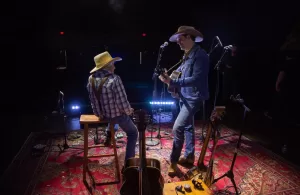![[PDF] Vintage Luxury Fashion : Exploring the Rise of the Secondhand ...](https://tmg.dmmserver.com/media/356/97830308/9783030887551.jpg)
Introduction to Vintage Fashion Revival
As a devoted follower and commentator of fashion trends, I’ve witnessed the growing allure of vintage items among consumers and luxury brands. With the second-hand luxury market projected to be worth 36 billion dollars in 2021, there’s a clear indication of this segment’s lucrative nature. It’s fascinating to observe luxury brands navigate this sphere, reclaiming their vintage legacies and capitalizing on the movement’s popularity.
The resurgence of vintage fashion
– **Growing Trend**: Over the past several years, the inclination towards secondhand and vintage fashion has gained remarkable momentum.
– **Catalyst**: The Covid-19 pandemic has, rather unexpectedly, served as a catalyst, amplifying interest in vintage fashion significantly.
– **Consumer Shift**: People are increasingly drawn to the authenticity and narrative that come with vintage pieces, perhaps as a response to the impersonal nature of mass production.
– **Sustainability Aspect**: With heightened awareness about the environment, there’s a pronounced shift towards sustainable consumption, making vintage fashion more appealing.
– **Quality and Longevity**: The superior quality of past fashion eras, coupled with the singular stories behind vintage items, are compelling selling points for today’s discerning consumers.
Implications for the luxury fashion industry
– **Brand Heritage**: Luxury brands, with their rich histories, are uniquely positioned to leverage their archives. They are reintroducing heritage pieces that resonate with both new and long-time aficionados.
– **Authenticity**: Brands are authenticating and refurbishing their vintage items, adding value and a sense of exclusivity.
– **New Business Models**: Some luxury brands have established certified pre-owned programs, effectively formalizing the second-hand luxury market.
– **Cultural Capital**: Luxury brands are curating their vintage offerings to appeal not only through quality but also as artifacts of cultural significance.
– **Market Expansion**: The vintage movement has paved the way for brands to tap into a wider demographic, including younger generations and sustainability advocates.
The interplay between the past and present in the fashion industry is a fascinating narrative—one where luxury brands are not just revisiting their storied pasts but are also actively shaping the future of sustainable fashion. This vintage revival is more than a trend; it’s a testament to the enduring power of luxury brands and the timelessness of exceptional design.
The Influence of High Fashion on Vintage Trends
Fashion trends are cyclical, and the resurgence of vintage styles is a testament to this. Luxury brands, with their historical archives full of iconic designs, are particularly influential when it comes to setting and revitalizing trends. Here is how the high fashion industry is impacting the vintage scene:
Designer inspirations from vintage styles
– **Retro Revival**: Designers often look back to their brand’s golden days for inspiration, bringing classic elements into modern designs.
– **Sustainability**: With sustainability becoming a priority for many consumers, designers turn to vintage styles to showcase timelessness and durable quality.
– **Celebrity Influence**: When public figures wear vintage pieces at high-profile events, it secures the relevance and desirability of vintage fashion.
SS22: Vintage-inspired collections from Valentino to Chanel
– **Valentino**: For Spring/Summer 2022, Valentino released outfits echoing the sophistication from eras past but with modern cuts and playful colors.
– **Chanel**: Chanel’s collection paid homage to its 1920s and 1930s eras, blending vintage-inspired tweeds and silhouettes with contemporary accessories.
– **Gucci**: Gucci embraced the ’70s era, infusing classic silhouettes with modern textures and bold prints to create a seamless blend of old and new.
The second-hand luxury market is on the rise, valued at approximately 36 billion dollars in 2021. During and following the Covid-19 pandemic, the interest in vintage has grown exponentially. People are seeking items with heritage, rootedness, and storytelling elements. They crave products that are not just luxurious but also carry a narrative and a touch of personal history. The fashion industry is witnessing a notable shift towards meaningful consumption. This is well-reflected in the behavior of both established fashion houses and emerging designers who are increasingly celebrating their vintage heritage in their latest collections.
In summary, this trend reflects the industry’s movement toward sustainable fashion and the desire for unique, storied, and quality pieces that offer more than just a branding label. It signifies a change in consumer attitudes and the value placed on pre-owned items, the stories they tell, and their enduring appeal.
The Intersection of Vintage and Contemporary
In the evolving landscape of fashion, the interplay between vintage soul and contemporary design forms a unique harmony that fascinates me deeply. As an observer and participant in the luxury fashion industry, the fusion of past and present in high-end collections reveals much about our societal values and aspirations.
Balancing old and new: Vintage in modern design
In my journey through the fashion world, the balancing act of incorporating vintage elements into modern design never fails to intrigue me. It’s a delicate process that involves:
– **Reinterpreting Heritage**: Luxury brands masterfully tap into their rich archives to reimagine vintage styles for the current day. This process respects tradition while infusing innovation.
– **Culturally Informed Palettes**: Choosing colors and patterns that hark back to a particular era, yet feel undeniably current, reveals a brand’s commitment to storytelling through design.
– **Harmonizing Silhouettes**: It’s an art to blend vintage silhouettes with contemporary aesthetics, creating garments that appeal to the nostalgic yet fashion-forward customer.
Seeing how vintage-rich inspirations flow onto the runways and into our closets is like watching history being retold through fabric and thread. It strikes a chord with those of us who value the narratives woven into the very seams of our apparel. This coalescence of time periods allows brands to stand out by offering a narrative depth that purely contemporary designs may lack.
Low-waste luxury: The appeal of vintage pieces
Further, the vintage renaissance aligns with the growing environmental consciousness in fashion. Repurposing vintage pieces symbolizes a commitment to reducing waste which resonates with my personal and professional ethos. Here are some points reflecting this emerging trend:
– **Reduced Carbon Footprint**: By opting for vintage, we participate in a cycle of reuse that’s fundamental in lessening our impact on the planet.
– **Patina of Time**: There’s a certain allure in the ‘lived-in’ quality of vintage items that modern, off-the-rack pieces can’t replicate.
– **Exclusivity**: Vintage luxury items are often one-of-a-kind, offering an exclusivity that goes beyond limited edition contemporary designs.
It’s these attributes that draw me, and many others, to vintage luxury. The value proposition of vintage pieces isn’t solely their aesthetic or brand name; it’s also their sustainability credentials and the singular stories they embody.
This push towards vintage is not just about fashion recirculating ideas; it’s about creating a sustainable framework within the industry. It respects the past and safeguards the future by making the old new again. It also speaks to a broader cultural shift toward mindful consumption, something that aligns closely with the values of informed luxury shoppers. Luxury brands are smartly capitalizing on this by answering the call for more sustainable practices while ensuring the longevity of their legacy through the reissue and revalorization of their vintage treasures.
Vintage Fashion in the Digital Age
In recent times, I’ve observed an intriguing transition in the fashion landscape, with digital platforms playing a pivotal role. The renaissance of vintage fashion isn’t just occurring on the streets or in the boutiques—it’s flourishing in the digital realm. Let’s delve into some of the ways that the internet and social media are shaping the vintage market.
TikTok and the rise of vintage and archive luxury
– **Youth Engagement**: As a tech-savvy generation, millennials and Gen Z-ers use TikTok to explore and share their passion for vintage fashion. They’re creating a community where style is not dictated by the latest runway look, but by personal expression found in vintage luxury.
– **User-Generated Content**: TikTok users post videos showcasing their vintage finds, styling tips, and histories behind iconic pieces, creating a buzz around certain items and potentially increasing their value.
– **Virality and Trends**: When a vintage piece goes viral on TikTok, it can become highly sought after, turning previously overlooked items into must-have treasures.
I can’t help but marvel at the democratization of fashion through these channels. Young consumers are taking charge, influencing trends and breathing new life into fashion history with a simple video post.
Online platforms shaping the vintage fashion landscape
– **Accessibility**: Online marketplaces expand the reach of vintage luxury, making it accessible globally. Platforms like Vestiaire Collective or The RealReal democratize the market by allowing anyone to buy and sell high-end vintage pieces.
– **Authentication Service**: Credible platforms offer authentication services, easing customer concerns about the legitimacy of luxury products and fostering trust in the vintage market.
– **Curation**: There’s an art to curating a vintage collection online. Platforms carefully select pieces that reflect current trends, making it easier for consumers to find desirable, high-quality vintage fashion.
– **Community Building**: Online forums and social media pages are becoming hubs for vintage enthusiasts to discuss, trade, and celebrate their love for historical garments.
It’s fascinating to witness these advancements, as they represent not just a niche interest but a booming sector of the fashion industry—one that successfully merges heritage with modern technology. LinearLayoutManagerVintage fashion, once hidden in the racks of dimly lit thrift stores, is now proudly displayed in the digital storefronts of Instagram feeds and Pinterest boards. It’s a reminder that history doesn’t disappear; it’s rediscovered and cherished anew by each generation. As I continue to engage with these online communities, I’m aware that each click, share, or purchase is a part of a larger narrative—one that sustains the life cycle of luxury fashion in an ever-evolving digital world.
The Role of Vintage in Sustainable Fashion
As someone deeply invested in the future of our planet, I have come to appreciate how vintage fashion aligns with the broader sustainability movement. It’s not merely a style choice but a conscious decision to participate in a circular economy that reduces waste and environmental impact.
Vintage fashion as a sustainable choice
– **Conservation of Resources**: By choosing vintage, individuals can prevent the waste of resources that goes into producing new garments. Each vintage item already embodies the materials, labor, and energy used in its creation, which means we are conserving resources with every piece that is re-worn.
– **Durability and Quality**: Many vintage items were crafted with a level of quality meant to stand the test of time. As consumers cherish these well-made pieces, they contribute to a decrease in the demand for fast fashion and its associated waste.
– **Slow Fashion Movement**: The vintage market supports the slow fashion movement by encouraging slower production schedules, fair wages, lower carbon emissions, and (ideally) zero waste. It’s about connecting with our clothing, rather than viewing them as disposable.
– **Mindful Consumption**: Wearing vintage allows for a more thoughtful and unique personal style. It encourages a mindful approach to consumption, where the story behind a garment and its previous life adds value beyond the physical item itself.
The impact of vintage on reducing fashion’s carbon footprint
– **Extended Lifespan of Clothing**: By focusing on vintage pieces, the lifespan of clothing extends dramatically. The longer a garment is worn, the smaller its carbon footprint because it delays the need for new resources to be used in creating replacement items.
– **Reduced Pollution**: The fashion industry is a significant contributor to pollution. Opting for vintage means reducing the demand for new items and thus the pollution created during their manufacture.
– **Waste Reduction**: Vintage shopping plays a role in waste reduction by recirculating existing garments. For every piece that is bought second-hand, there’s one less item that heads to the landfill.
– **Energy Savings**: The energy required to produce a new garment—from raw material extraction to final product—is substantial. Vintage items require no additional energy to make them ready for their next wearer.
Embracing vintage fashion is, for me, a commitment to our environment. It is about understanding that style and social responsibility are not mutually exclusive and that the choices I make in my wardrobe have far-reaching consequences. Every time I slip on a vintage jacket or pair of shoes, I am reminded that this act, as small as it may seem, is part of a collective effort to reduce the fashion industry’s footprint on our world.
Curating High-End Vintage Collections
Within the vibrant realm of vintage fashion, there is a delicate art to selecting and curating high-end collections. This practice is complex and layered, requiring not just keen sartorial insight but a profound appreciation for the narrative behind each piece.
The art of vintage selection and curation
– **Historical Significance**: As a curator, I prioritize the historical value of each garment. It’s essential to recognize the era, the designer’s legacy, and the cultural moments represented by these fabrics and silhouettes. Each piece is a chapter in fashion’s grand story, and it’s this trail of heritage that adds depth to a collection.
– **Condition and Authenticity**: The integrity of a vintage item is paramount. From verifying the authenticity of a label to examining the garment’s condition, we must assure clients that they’re investing in a piece that not only looks exceptional but is also undeniably genuine.
– **Aesthetic Appeal**: While cherishing history, a curator must also forecast which vintage pieces resonate with contemporary tastes. It’s about striking a balance between retro charm and modern appeal. The goal is to find timeless items that will continue to captivate and inspire.
– **Exclusivity**: Part of the allure of vintage fashion lies in its uniqueness. As a curator, I seek out pieces that are not only beautiful but also rare, providing clients with an opportunity to own something truly singular that cannot be readily duplicated in today’s market.
Curating is far more than accumulating old clothes; it’s about breathing new life into them, allowing them to be re-loved and re-worn, seamlessly integrating them into the cycle of modern fashion.
Insights from industry expert Caitlin Price
– **Consumer Evolution**: Caitlin Price, an esteemed vintage fashion expert, posits that today’s consumers are savvier and more conscious about their choices. Buyers are blending vintage with new, creating bespoke wardrobes that reflect their individual style while being mindful of sustainability.
– **Brand Reinvention**: Price notes that luxury brands are revisiting their archives to reinvent and reintroduce classic designs, creating a connection between vintage and current collections. This approach not only satisfies nostalgia but also introduces timeless pieces to a new audience.
– **Market Growth**: According to Price, the growing interest in high-quality vintage pieces signals a broader shift. Consumers are not simply looking for clothing; they are searching for items that hold value — financially, historically, and personally.
– **Influence of Social Platforms**: She highlights how social media has transformed the visibility of vintage fashion. Through Instagram and Pinterest, curators present curated aesthetics that resonate with their followers, effectively setting trends and creating demand for curated vintage collections.
In this context, curating is not a static activity but a dynamic dialogue with the past, present, and future of fashion. It’s a form of expression, a testament to the enduring bond between clothing and identity. Engaging in this process, I am not merely a gatekeeper of the past but an active participant in shaping how we perceive and appreciate fashion’s lineage.
Consumer Trends and Vintage Luxury
The demand for unique, timeless pieces
The burgeoning interest in vintage luxury demonstrates a pivotal shift in consumer behavior. While trends come and go, there is a perennial charm attached to items that stand the test of time. I have observed that people now are not merely in pursuit of what is current but are also actively seeking out pieces that have a sense of permanence.
– **Personalization**: The appeal of vintage, in my experience, extends beyond mere aesthetics and moves into personalization. My clients are looking for articles that allow them to carve out a unique style, something that cannot be emulated by fast fashion.
– **Investment Value**: Discerning shoppers view vintage luxury as a wise investment. Aware of the depreciating value of mass-produced items, they turn to the enduring worth of vintage, which often appreciates over time.
– **Sustainability**: There’s an increasing drive towards sustainability, causing buyers to reconsider their impact on the environment. By sourcing vintage, I am reducing waste and promoting a cyclical fashion economy.
How vintage has become a status symbol among luxury consumers
In a world awash with brands vying for attention, standing out requires something singular. Vintage luxury pieces serve this purpose, signifying a sophisticated understanding of fashion as cultural capital.
– **Exclusivity Asserts Prestige**: A primary allure for my clientele is the exclusivity that vintage luxury affords. Owning a piece that is replete with history and rarity confers a level of prestige that off-the-rack items can’t match.
– **Cultural Resonance**: I have found that garments and accessories from bygone eras carry stories that resonate deeply with individuals. They are artifacts of history, and wearing them is akin to donning one’s admiration for the past.
– **Brands Riding the Nostalgia Wave**: As luxury brands capitalize on nostalgia by reintroducing iconic pieces or motifs from their heritage, vintage originals become coveted items. They serve as tangible links to the past, imbued with authenticity that contemporary interpretations cannot capture.
I facilitate access to this exclusive world by curating collections that offer more than just clothing – they offer distinctiveness, sustainability, and a subtle display of cultural discernment. As the luxury sphere expands into the vintage domain, the role I play as a curator becomes increasingly central to how consumers engage with fashion. My work is to not only provide access to these treasured artifacts but also to educate and guide clients towards making choices that reflect their values and tastes in a rapidly evolving market.
Nostalgia’s Influence on Luxury Brand Strategies
In the competitive landscape of luxury fashion, tapping into the power of nostalgia has become a strategic imperative for brands looking to captivate consumers. As someone deeply embedded in the industry, I recognize that the resonance of vintage elements within a brand’s offerings can significantly enhance its appeal. This is not just about bringing back old favorites; it’s about leveraging the emotional connections that consumers have with the past, weaving them into the fabric of current collections and marketing narratives.
Harnessing nostalgia in branding and product development
– **Emotional Engagement**: I see the infusion of nostalgia as a way to emotionally engage with my clientele. By incorporating elements from bygone eras, luxury brands forge a sense of continuity, evoking memories and creating a story that resonates with the consumer in a deeply personal way.
– **Heritage as a Differentiator**: In my work, heritage becomes a brand differentiator. It is clear that in a saturated market, the history and pedigree of a brand can be compelling selling points, offering authenticity that cannot be replicated by newcomers.
– **Limited Edition Releases**: I often recommend limited edition releases of vintage-inspired pieces. These serve to generate buzz and excitement, creating a sense of urgency among consumers who desire exclusive products connected to a storied past.
– **Collaborative Efforts**: Cross-generational collaboration is something I’ve witnessed gaining traction. By collaborating with iconic figures or brands from previous decades, luxury brands can bridge the gap between different generations of consumers, broadening their appeal.
Through strategic planning and thoughtful execution, nostalgia can be a powerful tool in a luxury brand’s arsenal, enabling it to distinguish itself and strengthen consumer loyalty in a way that feels genuine and impactful.
Case studies of successful vintage-inspired luxury campaigns
– **Gucci’s Revival of Retro Designs**: In my analysis of successful campaigns, Gucci stands out with its revival of 70s and 80s designs. This strategic move capitalized on a wave of vintage appreciation while staying true to the brand’s quirky and eclectic aesthetic.
– **Louis Vuitton’s Tribute to Travel Heritage**: Louis Vuitton’s travel heritage is iconic, and its recent campaigns have utilized this legacy effectively. The brand’s modern travel accessories are marketed with a nod to its historic travel trunks, emphasizing the brand’s long-standing relationship with exploration and luxury.
– **Chanel’s Timeless Classic Flap Bag**: Chanel’s Classic Flap Bag, originally designed by Coco Chanel in the 1950s, remains a focal point in its collections. Continuously reintroduced in new materials and colors, it honors the brand’s history while remaining a symbol of contemporary high fashion.
These examples underscore the successful integration of nostalgia into a brand’s modern identity, showcasing the potential of vintage-inspired luxury campaigns to captivate the luxury market’s discerning consumers.
Looking to the Future: Vintage Fashion’s Evolution
The growth of slow fashion and its effects on vintage luxury
– **Sustainability and Ethical Consciousness**: In my role within the fashion industry, I have seen a shift where consumers are increasingly conscious about sustainability. This shift is a significant driver behind the popularity of vintage luxury. Slow fashion advocates for the mindful purchasing of garments that last longer, echoing the longevity and quality associated with vintage luxury items.
– **Increased Demand for Unique Pieces**: There is a growing demand for unique, one-of-a-kind pieces. In my networks, I observe that discerning consumers are turning to vintage as a means to differentiate their style and reduce fashion homogeneity. This demand benefits luxury brands with a rich archive of designs that can be reintroduced or reinterpreted.
– **Re-commerce Platforms**: The emergence and growth of re-commerce platforms specializing in luxury goods have made vintage more accessible. My collaborative work with these platforms has shown that they provide a curated experience that aligns with the high standards of luxury consumers, while also offering a sustainable choice for the environmentally conscious.
– **Brand-Controlled Vintage**: More luxury brands are establishing their own vintage departments or collaborating with trusted vintage resellers. In my professional opinion, this move allows brands to maintain control and integrity within the secondary market, ensuring that consumers receive authentic pieces in line with the brand’s image.
Predictions for the future role of vintage in fashion
– **Integration of Technology**: Looking ahead, I foresee technology playing a pivotal role in vintage fashion. Augmented reality (AR) and virtual reality (VR) could be used to virtually try on vintage pieces, while blockchain might provide transparent authentication processes, both elements adding to the consumer’s experience and trust.
– **Evolving Consumer Attitudes**: In my experience, the allure of vintage is not just a trend but an evolving consumer attitude. I predict that appreciation for craftsmanship and history will continue to grow, driving further interest in vintage luxury fashion.
– **Expansion into Emerging Markets**: The luxury vintage market is likely to continue expanding into new regions. Affluent consumers in emerging markets, whom I’ve studied, value both the status and the storytelling aspect of vintage, representing a significant opportunity for luxury brands to reach a wider audience with their heritage pieces.
– **Innovative Business Models**: I anticipate innovative business models emerging around the vintage luxury market. Subscription services, rental markets, and brand-authorized customizations could be among the next waves of growth that reflect changing consumer behaviors towards ownership and sustainability.
















